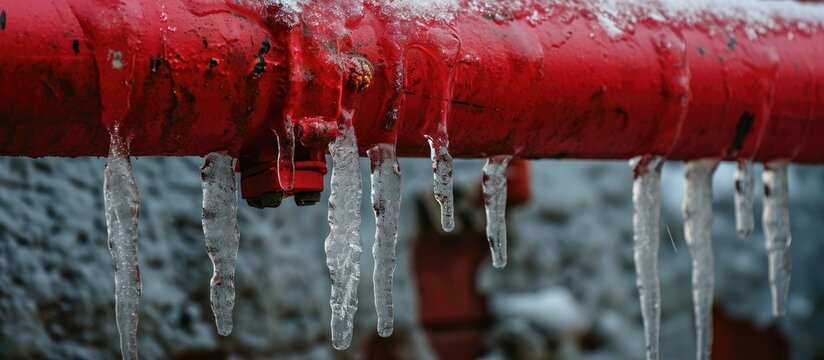Essential Tips to Avoid Frozen Plumbing in Winter: Specialist Guidance
Essential Tips to Avoid Frozen Plumbing in Winter: Specialist Guidance
Blog Article
What're your thoughts regarding Preventing and dealing with frozen pipes?

Cold weather can wreak havoc on your plumbing, particularly by freezing pipes. Below's just how to prevent it from happening and what to do if it does.
Intro
As temperature levels decrease, the threat of icy pipes increases, potentially leading to expensive repair work and water damages. Comprehending just how to prevent icy pipes is critical for property owners in cold climates.
Avoidance Tips
Insulating susceptible pipelines
Cover pipelines in insulation sleeves or use heat tape to protect them from freezing temperature levels. Concentrate on pipes in unheated or external areas of the home.
Home heating techniques
Keep interior rooms sufficiently heated up, specifically locations with plumbing. Open cupboard doors to permit warm air to flow around pipelines under sinks.
How to determine icy pipes
Try to find decreased water circulation from taps, uncommon odors or noises from pipelines, and visible frost on exposed pipes.
Long-Term Solutions
Structural modifications
Think about rerouting pipes away from exterior wall surfaces or unheated locations. Add added insulation to attic rooms, cellars, and crawl spaces.
Upgrading insulation
Purchase high-quality insulation for pipelines, attic rooms, and walls. Correct insulation helps preserve consistent temperature levels and decreases the risk of icy pipes.
Protecting Outside Plumbing
Yard tubes and outdoor taps
Detach and drain pipes yard pipes prior to winter months. Mount frost-proof faucets or cover exterior faucets with insulated caps.
Comprehending Icy Pipes
What triggers pipelines to ice up?
Pipes ice up when subjected to temperatures listed below 32 ° F (0 ° C) for expanded periods. As water inside the pipelines freezes, it expands, putting pressure on the pipeline wall surfaces and possibly triggering them to burst.
Threats and damages
Icy pipes can bring about water disruptions, building damages, and pricey repair work. Ruptured pipelines can flooding homes and create comprehensive architectural damage.
Indications of Frozen Water Lines
Identifying icy pipes early can prevent them from rupturing.
What to Do If Your Pipelines Freeze
Immediate actions to take
If you presume frozen pipelines, maintain taps open up to ease stress as the ice melts. Use a hairdryer or towels soaked in warm water to thaw pipelines slowly.
Conclusion
Avoiding icy pipelines needs positive steps and fast reactions. By comprehending the causes, indicators, and safety nets, home owners can safeguard their plumbing during winter.
6 Proven Ways to Prevent Frozen Pipes and Protect Your Home
Disconnect and Drain Garden Hoses
Before winter arrives, start by disconnecting your garden hoses and draining any remaining water. Close the shut-off valves that supply outdoor hose bibs and leave the outdoor faucet open to allow any residual water to drain. For extra protection, consider using faucet covers throughout the colder months. It’s also important to drain water from any sprinkler supply lines following the manufacturer’s directions.
Insulate Exposed Pipes
Insulating your pipes is an effective way to prevent freezing. Pipe insulation is readily available at home improvement stores and is relatively inexpensive. Pay close attention to pipes in unheated areas such as the attic, basement, crawl spaces, or garage. Apply foam insulation generously to create a buffer against the cold. You can also wrap your pipes in heat tape or thermostat-controlled heat cables for added warmth.
Seal Air Leaks
Inspect your home for any cracks or openings that could let in cold air. Seal any holes around the piping in interior or exterior walls, as well as the sill plates where your home rests on its foundation. Additionally, make sure to keep your garage door closed unless you’re entering or exiting. Leaving it open creates a significant air leak that can lead to frozen pipes.
Allow Warm Air Circulation
During cold snaps, it’s essential to allow warm air to circulate evenly throughout your home. Leave interior doors ajar to promote better airflow. Open kitchen and bathroom cabinets to help distribute heat consistently around the rooms. If you have small children or pets, be sure to remove any household chemicals or potentially harmful cleaners from open cabinets for safety.
Let Faucets Drip
A small trickle of water can make a big difference in preventing ice formation inside your pipes. When temperatures drop significantly, start a drip of water from all faucets served by exposed pipes. This continuous flow helps prevent the water from freezing. Additionally, running a few faucets slightly can relieve pressure inside the pipes, reducing the chances of a rupture if the water inside does freeze.
https://choateshvac.com/6-proven-ways-to-prevent-frozen-pipes-and-protect-your-home/

Do you like more info about 6 Ways to Prevent Frozen Pipes? Make a remark directly below. We will be glad to know your suggestions about this entry. We hope that you come back again later on. Are you aware of anybody else who is fascinated with the topic? Do not hesitate to share it. I am grateful for your time. Come back soon.
Book Inspection Report this page